#racial discrimination
Text
almost a year after i released a 2019 copy of the nofly list for journalism and research there is now an in depth paper on the ethno-religious over-representation in it. very interesting read, and confirms much of what we already suspected!
Garofalo, M. (2024) “Singular Purpose: Calculating the Degree of Ethno-Religious Over-representation in the US No-Fly List”, International Journal for Crime, Justice and Social Democracy. doi: 10.5204/ijcjsd.3069.
6K notes
·
View notes
Text

In 1865, enslaved people in Texas were notified by Union Civil War soldiers about the abolition of slavery. This was 2.5 years after the final Emancipation Proclamation which freed all enslaved Black Americans.
But Slavery Continued… In 1866, a year after the amendment was ratified, Alabama, Texas, Louisiana, Arkansas, Georgia, Mississippi, Florida, Tennessee, and South Carolina began to lease out convicts for labor.
This made the business of arresting black people very lucrative, thus hundreds of white men were hired by these states as police officers.
Their primary responsibility being to search out and arrest black peoples who were in violation of ‘Black Codes’
Basically, black codes were a series of laws criminalizing legal activity for black people. Through the enforcement of these laws, they could be imprisoned.
Once arrested, these men, women & children would be leased to plantations or they would be leased to work at coal mines, or railroad companies. The owners of these businesses would pay the state for every prisoner who worked for them; prison labor.
It’s believed that after the passing of the 13th Amendment, more than 800,000 Black people were part of that system of re-enslavement through the prison system.
The 13th Amendment declared that "Neither slavery nor involuntary servitude, except as a punishment for crime whereof the party shall have been duly convicted, shall exist within the United States, or any place subject to their jurisdiction."
Lawmakers used this phrase to make petty offenses crimes. When Blacks were found guilty of committing these crimes, they were imprisoned and then leased out to the same businesses that lost slaves after the passing of the 13th Amendment.
The majority of White Southern farmers and business owners hated the 13th Amendment because it took away slave labor. As a way to appease them, the federal government turned a blind eye when southern states used this clause in the 13th Amendment to establish the Black Codes.
#slavery#emancipation proclamation#black americans#convict leasing#black codes#13th amendment#involuntary servitude#prison labor#re-enslavement#southern states#racial discrimination
399 notes
·
View notes
Text
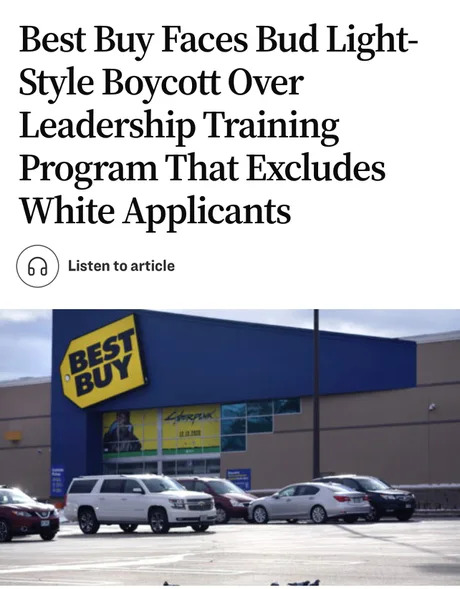
(x)
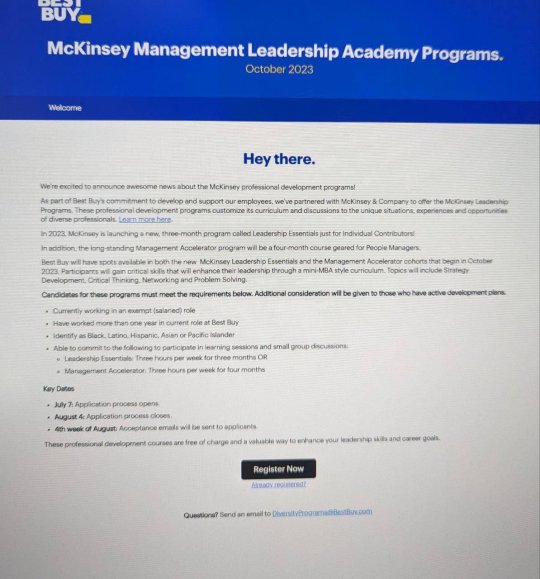
199 notes
·
View notes
Text
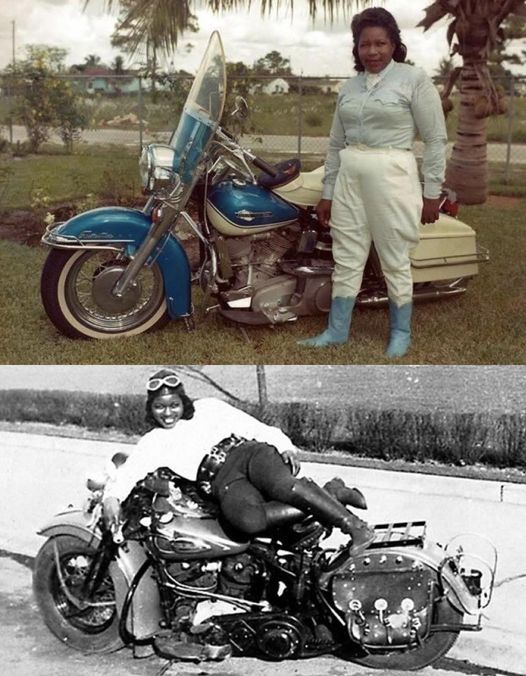
Bessie Stringfield the "Motorcycle Queen Of Miami"
"At the age of 16 Stringfield taught herself to ride her first motorcycle, a 1928 Indian Scout. In 1930, at the age of 19, she commenced traveling across the United States. She made seven more long-distance trips in the US, and eventually rode through the 48 lower states, Europe, Brazil and Haiti. During this time, she earned money from performing motorcycle stunts in carnival shows. Due to her skin color, Stringfield was often denied accommodation while traveling, so she would sleep on her motorcycle at filling stations. Due to her sex, she was refused prizes in flat track races she entered.
In the 1950s Stringfield moved to Miami, Florida, where at first she was told "n*gger women are not allowed to ride motorcycles" by the local police. After repeatedly being pulled over and harassed by officers, she visited the police captain. They went to a nearby park to prove her riding abilities. She gained the captain's approval to ride and did not have any more trouble with the police."
More info: https://en.wikipedia.org/wiki/Bessie_Stringfield
#bessie stringfield#black women#bikers#biker women#u.s. history#feminism#feminist#racism#sexism#racial discrimination#gender discrimination#black women's history
113 notes
·
View notes
Text




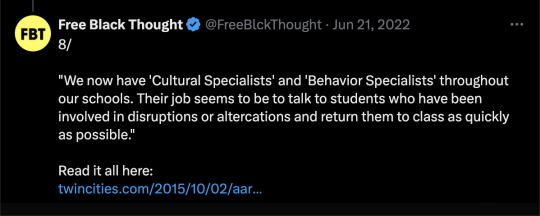
By: Aaron Benner
Published: Oct 2, 2015
I have been an elementary teacher almost all of my adult life, mostly in St. Paul Public Schools. First and foremost, I teach because I love kids, I love schools, I love our city, and I really love what happens when a group of kids becomes a community in a classroom and a school. For this to occur, everybody has to play a part — parents, students, teachers, building and district administration, and the broader community. As a black man, it breaks my heart to watch these communities fall apart and to see some children who look like me behave so poorly in our schools.
In 2011, I addressed the St. Paul School Board. At the time, I told them about my concerns with student behavior at Benjamin E. Mays Elementary School, where I taught sixth grade. I hoped to start a discussion about what I was witnessing. Although the media paid some attention (likely because my race made for an interesting story), the school board ignored me. I addressed the board again on May 20, 2014, regarding the same issues, but this time I was aware they were happening districtwide. Four other brave teachers accompanied me. The school board ignored us again and tried to paint us as anti-racial equity.
From 2013-15, I taught fourth grade at John A. Johnson Elementary (JAJ). The behaviors that I witnessed last year at JAJ were far worse than what I complained to the school board about in 2011 and in 2014. On a daily basis, I saw students cussing at their teachers, running out of class, yelling and screaming in the halls, and fighting. If I had a dollar for every time my class was interrupted by a student running into my room and yelling, I’d be a rich man. It was obvious to me that these behaviors were affecting learning, so when I saw the abysmal test scores this summer, I was not surprised. Out of 375 students, only 14.3 percent were proficient in Reading, 9.6 percent in Math and 9.3 percent in Science. These test scores are not acceptable in any way, shape or form.
I diligently collected data on the behaviors that I saw in our school and completed behavior referrals for the assaults. These referrals were not accurately collected. The school suspended some students, but many more assaults were ignored or questioned by administrators to the point where the assaults were not even documented. I have since learned that this tactic is widely used throughout the district to keep the numbers of referrals and suspensions low.
The parents who complained to the school board last year about behavior at Ramsey Jr. High know all too well about behaviors being ignored. The students of SPPS are being used in some sort of social experiment where they are not being held accountable for their behavior. This is only setting our children up to fail in the future, especially our black students. All of my students at JAJ were traumatized by what they experienced last year — even my black students. Safety was my number one concern, not teaching.
Who would conduct such an experiment on our kids? I blame the San Francisco-based consulting firm, Pacific Education Group (PEG). PEG was hired by SPPS in 2010 to help close the achievement gap. PEG makes no secret of the fact that its prescription for closing the gap is based on the Critical Race Theory. This theory argues that racism is so ingrained in the American way of life — its economy, schools, and government — that things must be made unequal in order to compensate for that racism. PEG pushes the idea that black students are victims of white school policies that make it difficult or impossible for them to learn. So, when a black student is disruptive, PEG, as I see it, stresses that it’s not their fault, and the student should just take a break, and then return to class shortly thereafter.
Racism and white privilege definitely exist, and there is not enough space in this paper for me to share all of the humiliating encounters I’ve experienced that are a product of racism. But to blame poor behavior and low test scores solely on white teachers is simply wrong. However, it’s the new narrative in our district, pushed by PEG.
I recently dropped out of the St. Paul School Board race to focus on my new job at a charter school, but I’m still concerned with the current state of SPPS and the direction of the school board. Here’s what I think should happen: First and foremost, the newly elected board must sever ties with Pacific Education Group. PEG has charged the taxpayers of St. Paul $3 million over the last five years. According to some reports, SPPS has matched PEG with $1.2 million. What are these matching dollars used for? It is crucial to understand that behaviors throughout the district have escalated to the point where we are at a crisis in St. Paul. PEG is not working. To add insult to injury, two weeks ago, the St. Paul School Board had the audacity to set the ceiling of next year’s tax levy 3.85 percent higher than the current year. Tax increase? This must be a joke.
Racial equity and closing the achievement gap, the correct way, are commendable goals. However, PEG’s idea of racial equity is NOT the answer. PEG stresses black culture and nothing else. What is black culture? Did PEG survey the black community of St. Paul and ask what behaviors should be acceptable in our schools? I don’t recall filling out any surveys or receiving any phone calls regarding this topic.
Because of PEG, we have forgotten about our Asian, Latino and Native communities. The St. Paul Public School district has the second most diverse school population in the country (New York City is ranked No. 1). For the record, Asians make up the largest minority group in our schools. PEG has influenced this district on major policy changes, from questionable behavioral guidelines and hiring practices to the creation of new positions with jargonistic titles.
We now have “Cultural Specialists” and “Behavior Specialists” throughout our schools. An overwhelming number of these specialists are black, and it’s not clear to me what their qualifications are. Their job seems to be to talk to students who have been involved in disruptions or altercations and return them to class as quickly as possible. Some of these “specialists” even reward disruptive students by taking them to the gym to play basketball (yes, you read that correctly). This scene plays out over and over for teachers throughout the school day. There is no limit to the number of times a disruptive student will be returned to your class. The behavior obviously has not changed, and some students have realized that their poor behavior has its benefits.
St. Paul Public Schools is in desperate need of true behaviorists to replace these “specialists.” Licensed therapists who are trained to help change and replace inappropriate behaviors. I expect that PEG would never go for this because it would contradict their excuse that “black culture” accounts for such behaviors. The newly elected school board can change that.
Another action the newly elected school board must take is to visit schools, listen to teachers, and offer them much-needed support. Teachers are currently fending for themselves when it comes to behavior concerns. Part of my frustration is with the leadership of the St. Paul Federation of Teachers. The union is so concerned with getting along with the district that they are paralyzed when the hundreds of teachers they represent bring up the issue of behavior. This needs to change.
PEG and SPPS are harming the very people whose interests they claim to represent. Follow the money. The taxpayers of St. Paul should demand to know who exactly is benefitting from PEG. Students definitely aren’t.
Aaron Anthony Benner works as the African- American Liaison/Behavior Coach and Community of Peace Academy, a public charter school in St. Paul.
--
By: Victor Skinner
Published: Sep 24, 2019
Aaron Benner, a black teacher from St. Paul, Minnesota, won a large settlement with the St. Paul School District last week over retaliation he faced for speaking out against the district’s race-based student discipline policies.
Benner argued the investigations came in retaliation for complaints to the school board about race-based student discipline policies implemented by then Superintendent Valeria Silva and promoted by President Obama. The discipline policies aimed to reduce suspensions of black students by lowering the expectations for behavior and increasing the threshold for suspensions, something Benner repeatedly, publicly argued was against the best interests of black students.
The “restorative justice” approach to student discipline was accompanied by “white privilege” teacher training sessions that cost the district taxpayers more than $3 million. Those sessions focused on the “white privilege” theory that the public education system is hopelessly stacked against black students, who shouldn’t be held accountable for poor academics or bad behavior.
In St. Paul and hundreds of schools across the country, the “white privilege” training sessions were conducted by Pacific Educational Group, also known as PEG.
“PEG was hired by SPPS in 2010 to help close the achievement gap. PEG makes no secret that its prescription for closing the gap is based on the Critical Race Theory. This theory argues that racism is so ingrained in the American way of life – its economy, schools, and government – that things must be made unequal in order to compensate for that racism,” Benner wrote in a 2015 editorial for the Press.
“Peg pushes the idea that black students are victims of white school policies that make it difficult or impossible for them to learn,” Benner wrote. “So, when a black student is disruptive, PEG, as I see it, stresses that it’s not their fault.”
Benner refused to accept that black students are less capable than their white classmates and left the school district in 2015. Benner taught at a local charter school and was later hired for a administration position at the St. Paul private school Cretin-Derham Hall, according to the Star Tribune.
After years of complaints from parents, teachers, administrators and others about violent and disruptive students running rampant with impunity, St. Paul school leaders eventually got rid of Silva and scrapped the failed student discipline policies.
Last week, the school board settled up with Benner, though the district denied any wrongdoing.
“This agreement enables the district to avoid the time, expense and uncertainty of protracted legal proceedings regarding its previous policies, practices and expectations,” board members wrote in a prepared statement.
The district contends taxpayers are responsible for $50,000 of the settlement, while its insurer will cover $475,000.
Benner told the Star Tribune he credits God for the favorable outcome.
“I thank God for all the blessings in my life,” he wrote in an email to the news site. “I turned 50 this year, got married in July and now (there is) this settlement.”
#Aaron Benner#diversity equity and inclusion#diversity#equity#inclusion#racial equity#white privilege#diversity training#educational equity#lower standards#bigotry of low expectations#neoracism#antiracism as religion#antiracism#racial discrimination#corruption of education#education#religion is a mental illness
38 notes
·
View notes
Text

The National Association of Realtors and organized real estate played an even larger role in intentionally segregating the country than most people knew - those wrongs must be redressed.


A redlining map of St. Louis, prepared by the federal government’s Home Owners' Loan Corporation, used data from local real estate professionals to “grade” neighborhoods, based largely on their racial makeup. Credit: National Archives/Mapping Inequality
In March, a court in the Northern District of Illinois allowed a class-action lawsuit to move forward against the National Association of Realtors, the trade organization that is single largest federal lobbying spender in the US.
The organization, along with seven major real estate companies that serve as its co-defendants in Moehrl et al., could be hit with $13 billion to $40 billion in damages. (The lawsuit is the larger of two separate class-action cases moving through the courts.) The case revolves around how the NAR leverages its local member boards’ control of 97% of multiple listing systems to keep in place rules regarding set commissions — as the lawsuit notes, US homebuyers and sellers pay commission rates roughly double those of peer countries.
(continue reading)
#politics#redlining#housing#racism#fair housing#national association of realtors#racial discrimination#anti blackness#urban renewal#realtors#organized real estate#real estate
23 notes
·
View notes
Text
Being Black and presenting as masculine, embracing masculinity, traditionally masculine gender roles, and so much more that may be viewed as masculine within certain societies, is not lesser than anything associated with femininity. Black masculine women and femmes do not need to conform or perform to your standards and ideas of femininity, in order to be seen as human, gentle, caring, dainty, or worthy of protection. Neither do masc presenting Black women and femmes need to even like being feminine or have to be feminine in general, in order to be important and cherished voices within their respective communities.
All Black women and femmes, regardless of identities and presentations, do not need to embrace and present as feminine in order for our lives to be seen as valuable. We do NOT need to be feminine in order to receive sympathy or empathy. We do not need to be feminine in order to be included in the phrase/movement of Protect Black Women. And we don't need a connection to or to identify with womanhood in order for our voices to be heard.
This goes double for brown and dark skinned Black women and femmes even more. Challenge the systems that make it so darker Black women and femmes are barred from or have restricted access on exploring, embracing, and being seen feminine or women but also challenge the views and associations that being masculine or having a close and intimate relationship with manhood as a darker skinned Black woman/femme is inherently violent, inherently angrier, and inherently unattractive.
Last but not least darker skinned Black women and femmes who are plus sized and present as masculine, should not be anyone's epitomy of what violent, dangerous, or aggressive looks like. Biases like those directly contribute to systematic oppression against fat Black women/femmes on daily basis. They don't exist in a vacuum and should not be taken lightly.
Ultimately Black women and femmes having femininity, the right to identify or be seen as women stripped from us by white people and white supremacy, does not mean make masculinity unaccessible to us, or that presenting as masculine doesn't have its own prejudices and biases to dismantle, or that masculinity is a prison to us or our only viable option. If you're not advocating for and protecting all Black women and femmes than your activism, allyship, actions, and words, are empty.
#anti black racism#anti blackness#antiblackness#antiblack racism#racism#lgbt#queer#lgbtq#black masculinity#femininity#systemic discrimination#discrimination#bias#prejudice#protect black women#black femmes#racial discrimination#racial stereotyping#racial prejudice#racial bias#gender stereotyping#gender roles#gender nonconforming#lgbt poc#lgbtq poc#lgbt queer#lgbt community#lgbtq community#queer community#fatphobia
69 notes
·
View notes
Text
its so funny how even by other black elders, afros are seen as this unmanageable menace that need to be combed, but many of them have not taken the time to learn how to do afros, and many black people who have self hatred are less likely to take care of their hair well due to having to stick to the “virtue” of appealing to white people
and this os especially apparent in how people have literally gotten punished at school or work for wearing hairstyles commonly worn by black people, and how certain workplaces have policies against it. not to mention how nonblack people seem to almost always be touching black hair without consent, treating it as “exotic”, combined with a general hatred of curlier hair, including afros, especially with 4c hair
5 notes
·
View notes
Text
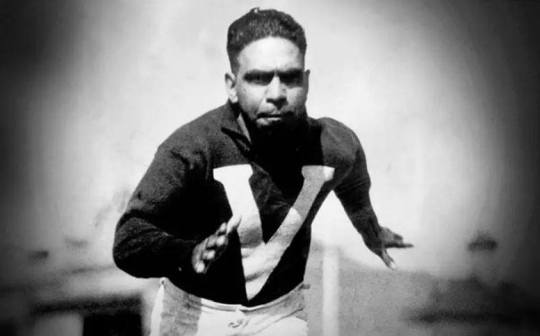
This is an excerpt from the book Favourite Footy Yarns, by Journalist, Ken Piesse.
Sir Doug Nicholls 1906 - 1988.
Racial prejudice and vilification was a cruel reality in football in the 1920's.
Tiny Douglas Nicholls had his heart set on a League career but after six weeks at Carlton walked out without playing a game. He’d been shunned by the players and even the trainers who refused to rub-down a black man. One said he smelled and several others said they couldn’t see him because he wore black shorts.
There was no such colour bar as a teenager growing up in Cumeragunga in Northern Victoria, where Nicholls had become known as “The Flying Abo” with his acrobatic leaping and scintillating speed. He was short, but could run like the wind and had exceptional ball skills which were his ticket to a new life.
Joining the VFA club Northcote, he played his first game in late May 1927, prompting one Melbourne Herald writer to comment:
The ten-stone Hercules had the spring of a rubber ball, the speed of an Emu and the strength of a Giant. He could flash between followers, bounce higher than a six footer and squirm through a pack. His kicking and passing on the run, his speed of turn, his spectacular leaps - like a little frog with spread legs - set the crowd roaring. They knew they were seeing as good a footballer as they were ever likely to see.
So impressed were his team mates that they had a ‘whip-around’ for him after the game. He played in the team’s 1929 Premiership at the MCG, being one of the most Outstanding afield. For two years running he was the Brickfielders’ best and fairest player. Despite his popularity among his own, rarely would he play a game without being abused by opposition players and supporters for his colour and race. His brother Dowie also joined the club for a season, the brothers being nicknamed ‘Chocolate and Cocoa’.
After five years Nicholls joined Fitzroy in the VFL where he earned Big V Selection and finished third in one club Best and Fairest behind Brownlow Medalists Haydn Bunton and Wilfred ‘Chicken’ Smallhorn. The club also gave him a job sweeping out the stands.
On his very first night at Fitzroy, Nicholls was changing by himself in a remote corner of the room when Bunton walked over to him, “What’s the idea?” he asked, “Why aren’t you with the others?”
“You know how it is” replied Nicholls.
Bunton bought his gear over and changed beside Nicholls, a ritual he repeated every Tuesday and Thursday.
Nicholls was one of the first Indigenous Australians to play 50 VFL games. Football gave him fresh status he could never have had back at home at Cumeroogunga. “I was quick on my feet and quick of eye”’ he told the interviewer. “I got it from my ancestors, they needed it to get out of trouble”.
For him, football was more than a game, it was his salvation. “How I look forward to each Saturday’s play,” he once said. The roar of the crowd is music , I revel in the tense atmosphere of the game and the preparation for it. So keen am I on football, I’d go anywhere for a game. Once on a football field I forget everything else. I’m playing football and I never take my eyes off that ball. My aim is not only to beat my opponent but also to serve my side. I realise that in football, as in other things, it’s teamwork that tells.”
At just 157 centimetres (five feet two inches), Nicholls conceded height to almost all his opponents, but possessed electrifying pace and could out run them all. Before joining Fitzroy he’d won the Nyah and Warracknabeal Gifts. Embarrassed Carlton officials always claimed it was Nicholls height that prevented selection, but it was purely a smokescreen. A couple of lines in ‘The ballad of Haydn Bunton’ by Ken Mansell and Peter Bell are particularly poignant.
When little Dougie Nicholls came down from the scrub,
Football was a white man’s game, at Carlton he was snubbed,
Just an Aborigine, they would not let him in.
No one saw his blinding pace, just the colour of his skin.
One of Nicholls proudest moments came when he was selected for Victoria in 1935. He was the first Indigenous Australian to be so honoured. Such was his popularity that during his time with the Victorian side, Police in Perth exempted him from the after-dark curfew normally imposed on Aboriginal People.
On the train bringing the Victorians to Perth, Jack Dyer, then just 21, came into Nicholl’s compartment, “How are things going Dougie?” asked Dyer.
“I don’t like you Jack Dyer.”
“Why? What have I done?”
“You called me a N***** on the football field”.
“I don’t remember Doug….”
Fitzroy was playing Richmond last year. We jumped for the ball together. You pushed me , “out of the way N*****,” that’s what you said.”
“Doug, I’ve got a big mouth….I’m sorry.”
Nicholls immediately accepted Dyer’s apology, grinned and said, “Bet I was flying high, when I should have stayed down, Can’t help going after the ball, the coach gets mad at me.”
It was on that long train trip across the Nullarbor that Nicholls saw and met Aboriginal people begging for money and tobacco at several of the stops. Their clothes were filthy and the young wore no clothes at all. The train guards weren’t even allowed to give them water. The Authorities wanted them out of sight and out of mind. Nicholls made a promise to himself that he would do everything he could to improve their circumstances. He wanted black and white to work together and in time he was to become one of the most revered of all Indigenous Australians, a lay preacher and pastor and a champion for his people.
More than any other Aboriginal Sportsmen of his era, Nicholls helped to break through the white man’s colour bar. In 1957 he was the first Aboriginal Australian to receive the MBE and in 1972 the first to be Knighted. He served as Governor of South Australia from 1976 to 1977. He was also Father of the Year in 1962, the first Aboriginal Justice of the Peace in 1963 and even became King of Moomba.
At his funeral in 1988, well wishers lined Bell and High streets almost all the way to Campbellfield. It was a fitting farewell.
3 notes
·
View notes
Photo

Today marks 3 years since George Floyd's murder. His death sparked demonstrations around the world and was the largest racial justice protests in the United States since the civil rights movement.
As we honor his life and legacy, discover from Advancement Project, Baltimore Action Legal Team (BALT), BlackOUT Collective, BYP100 (Black Youth Project 100), Dream Defenders (DD), Know Your Rights Camp (KYRC), Live Free, Organizing Black, Race Forward, and Southsiders Organized for Unity and Liberation (SOUL) how you can continue the fight for racial justice!
📸 by Faith Eselé on Unsplash
#george floyd#justice for george floyd#say his name#i can't breathe#police brutality#end police brutality#black lives matter#blm#blm movement#racial discrimination#racism#racism in america#institutional racism#systemic racism#end racism#stop racism#fight racism#anti-racism#no racism#no to racism#say no to racism#racial justice#racial equality#equality#racial equity#civil rights#social justice#human rights
18 notes
·
View notes
Video
youtube
How Black and White Southern Timber Workers Almost Smashed Capitalism by NonCompete
#thought provoking#evils of capitalism#unionization#racism#racial discrimination#racial segregation#355/365
4 notes
·
View notes
Text
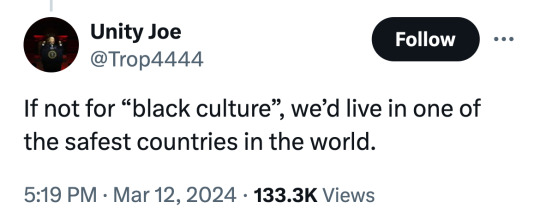


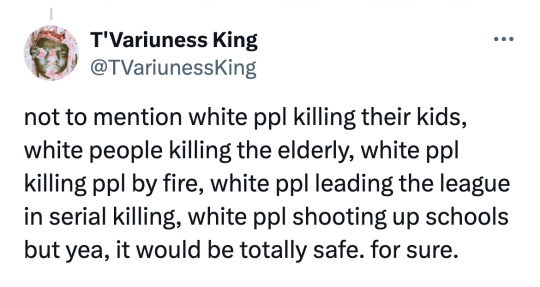
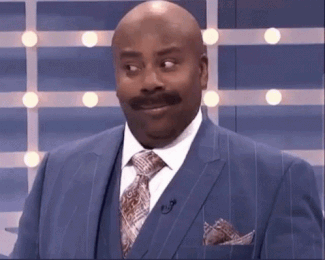
#racism#discrimination#racial inequality#social justice#civil rights#systemic racism#racial bias#racial prejudice#racial discrimination#racial justice#twitter#stupid people
263 notes
·
View notes
Text
American Indian Discrimination and Issues
If you want the links to important causes just skip towards the end, but I implore you to read through what I’ve written as it’s important as well!
I think it’s a major disservice that barely anyone talks about the fact that the Federal Government doesn’t recognize members of tribes whose land was taken from them. Obviously most of the US is stolen land but in the mid 1900s the Federal government terminated Indian land rights to “assimilate” Indian people, and without an official land base it’s harder to congregate and act as a sovereign nation, therefore they aren’t eligible for federal recognition. Furthermore, in 1900 the Bureau of Indian Affairs didn’t do a complete consensus of the US and missed places where Indians lived, meaning members of indigenous communities were missed and not represented on the census data. One of the criterion to becoming a federally recognized tribe is the demonstration “that it has been identified as an American Indian entity on a substantially continuous basis since 1900.” (R. Lee Fleming, Director of the Office of Federal Acknowledgement).
Some of you may also be wondering why federal acknowledgement is so important. For starters, American Indians are the poorest ethnic group in the US. Federally recognized tribes are permitted to open up casinos in places that do not permit gambling because these tribes have the status of being a sovereign nation. While these casinos are able to provide for many Indian families and make improvements to reservations, this income isn’t extended to those with tribal ancestry who aren’t apart of those Federally recognized tribes. You also can’t get financial assistance from the Bureau of Indian Affairs if you’re not from a Federally recognized tribe. This means that any federal programs, health insurances, grants, reparations, etc. are not provided.
There is also a large chunk of American Indian history that is erased from the knowledge of the general public - such as the fact that they weren’t granted US citizenship until 1924, 56 years after African Americans were granted it, or the fact they were also subjected to Jim Crow laws and racial segregation in the South, or the Red Power movement as a whole.
I think it’s important to understand the struggles American Indians have faced and still face to this day - having the highest likelihood than any other race of being killed in a police encounter (3x the rate of White Americans, 2.6x the rate of Black Americans), having an incarceration rate 38% higher than the national average and receiving harsher sentences than White, Black, and Hispanic offenders, having the highest rate of violent crime victimizations compared to every other race with around 70% of those committing hate crimes not being of the same race as them, with 46% of the perpetrators being complete strangers to the victim, and 75% of sexual assaults against them being committed by strangers or acquaintances (according to the Bureau of Statistics )- whereas amongst the general population only 58.5% of sexual assaults are committed by strangers or acquaintances (RAINN).
They also have the lowest median household income out of all races in the US (data from 2022). Furthermore, the American Indian population is rarely mentioned in discussions about the racial wage gap despite the fact that they make nearly the same (only one cent more) earnings per dollar as Black Americans do (US Department of Labor) relative to White American earnings and having a lower share of income than every other race. Nor is it mentioned that American Indian women on average are paid less than Black Women (who are often more focused on by the media) when looking at the racial gender gap (National Partnership for Women and Families).
Another issue that is rarely addressed is the poor access and racism faced in terms of health care. The leasing causes of death for American Indians are heart disease (25% of deaths), cancer (22%), and accidents (19%). There are many diseases that affect American Indians at a higher rate than the general population as well. However, they also are more likely to not receive medical assistance because of the cost and much less likely to have visited a dentist as well, putting them more at risk for dental related illnesses. 33% of American Indians also do not have health insurance either. Furthermore, the Indian Health Service (the Federal Department dedicated to providing American Indians with Health Care services) has had its funding cut multiple times within the past two decades (with a $800,000,000 cut in 2013) making it harder to provide adequate health care for them.
I would also like to state that I’m not trying to diminish the discrimination, racism, and pain that other people of color undergo, nor am I trying to devalue or discredit their experiences. All people of color deserve justice and equality . I’m just trying to raise awareness to the fact that American Indians face a lot of discrimination at higher rates but are less focused on in the media. Overall, I just think that it’s important to draw more attention to the issues that they face and different ways to combat those issues.
Some American Indian Organizations and Causes to support are:
The Indigenous Media Freedom Alliance whose goal is to aid American Indians in being seen and heard in independent media. https://imfreedomalliance.org/
C.O.P.E. which aims to help Najavo people who live with chronic illnesses & improve the wellbeing of American Indians. https://www.copeprogram.org/aboutus
Land Back which fights for the return to indigenous lands in the US to their peoples. https://landback.org/
The American Indian Community House which aims to improve American Indian wellbeing and increase the visibility of American Indian cultures in urban settings. https://aich.org/about/
C.H.I.R.P. which originally served to research, preserve, and document the history & culture of the Nevada City Rancheria Nisenan Tribe. However, it now serves as a way to support their people after it was no longer recognized by the Federal government, leaving them without access to programs that support their health and well-being. https://chirpca.org/
Diné C.A.R.E. which defends Najavo communities against exploitative and destructive environmental practices and issues. https://www.dine-care.org/about-us
Hopi Relief Fund which aims to distribute the necessary supplies to aid community members in their recovery of the Covid-19 crisis. https://hopirelief.org/about-us
Indigenous Roots which uses art and activism to promote opportunities for Indigenous peoples, such as local classes, scholarships, artist grants, art installations, etc. https://indigenous-roots.org/
Intertribal Friend House whose mission is to expand resources for American Indians so that they can stay connected to their culture. https://www.ifhurbanrez.org/
The National Urban Family Coalition which advocates to bring awareness to the struggles that American Indians living in urban areas still face. https://www.nuifc.org/
R.J.I.P. which focuses on bringing justice to American Indian victims and addressing the disproportionate rates at which American Indians are victimized. https://www.indigenousjustice.org/
Sogorea Te’ Land Trust which focuses on returning Indigenous Land to indigenous people (similar to Land Back). https://sogoreate-landtrust.org/
N.A.D.L.C. which advocates for American Indians with disabilities. https://www.nativedisabilitylaw.org/
AISES https://www.aises.org/about/history
https://nativephilanthropy.candid.org/timeline/era/indian-self-determination-and-self-governance-era/#timeline-content
I also implore you to also check out these American Indian and Indigenous Businesses:
Cheek Bone Beauty https://www.cheekbonebeauty.com/
Sḵwálwen Botanicals https://skwalwen.com/
Prados Beauty https://pradosbeauty.com/
Ah-Shí Beauty https://www.ahshibeauty.com/
Satya Organic Skincare https://satyaorganics.com/
The Yukon Soaps Company https://yukonsoaps.com/
Blended Girl Cosmetics https://blendedgirl.com/
Sequoia Soaps https://sequoiasoaps.com/
Sister Sky (Haircare) https://sistersky.com/
Quw'utsun Made https://www.firstpickhandmade.com/personnel/quwutsun-made/
Ginew https://ginewusa.com/
B.yellowtail https://byellowtail.com/
Eighth Generation https://eighthgeneration.com/
Lauren Good Day https://laurengoodday.com/
Urban Native Era https://urbannativeera.com/
OXDX Clothing https://www.oxdxclothing.com/
Beyond Buckskin Boutique https://shop.beyondbuckskin.com/
Liandra Swim https://liandraswim.com/en-us
Lesley Hampton https://lesleyhampton.com/
Haus of Dizzy https://hausofdizzy.com/
#american indian#land back#american indian discrimination#racial justice#racial equality#racialdisparities#racial discrimination#indigenous#indigenous rights#american indian rights#indigenous movements#red power movement#indigenous history#american indian history#american indian businesses#indigenous business#indigenous businesses#american indian charities#indigenous charities
3 notes
·
View notes
Text

Dialogica: two projects on the elimination of racial discrimination
Photographer: Gordon Parks

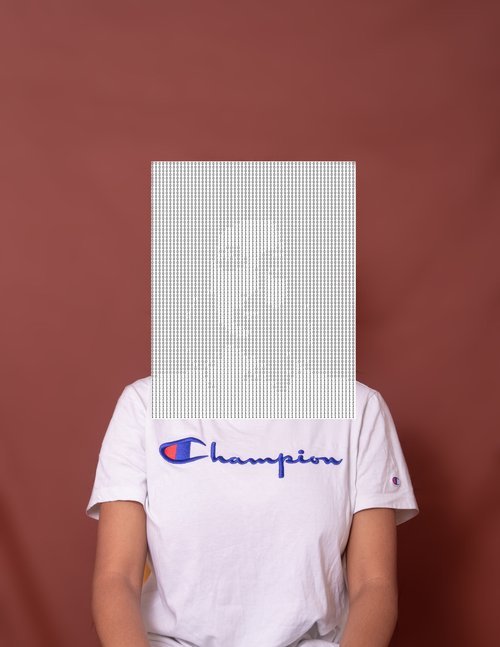
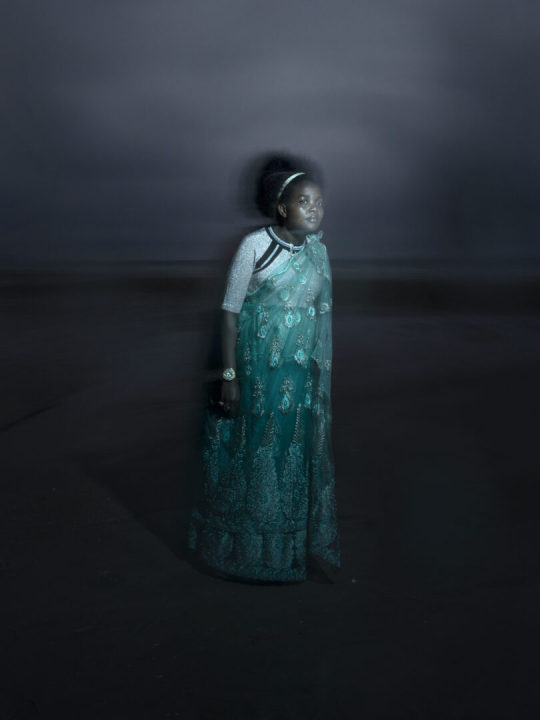
3 notes
·
View notes
Text

"Not sure who needs to hear this, but presupposition of character based solely on skin color is the definition of racism. You can repackage it however you want, still racism."
-- Joseph Crain
27 notes
·
View notes
Text
https://docs.google.com/forms/d/e/1FAIpQLSf2fT-L2hATJgH8n4gZZwo8tDMRLJhh5PLmM0o59QpBI83V-w/viewform?usp=sf_link
As a Black and LGBT high schooler, I’ve decided to create this test for use by mainly Floridians in high school or higher, though those homeschooled or with no education are also welcome. It’s a survey related to Ron DeSantis’ handling of racial and LGBT discrimination, along with your feelings about it.
Since this is my first time using Google Forms, I apologize if I mess anything up. I’m not very experienced at using it but will do my best to make it accessible. If you have problems assessing it at any moment, please tell me and I’ll fix it up :3
6 notes
·
View notes